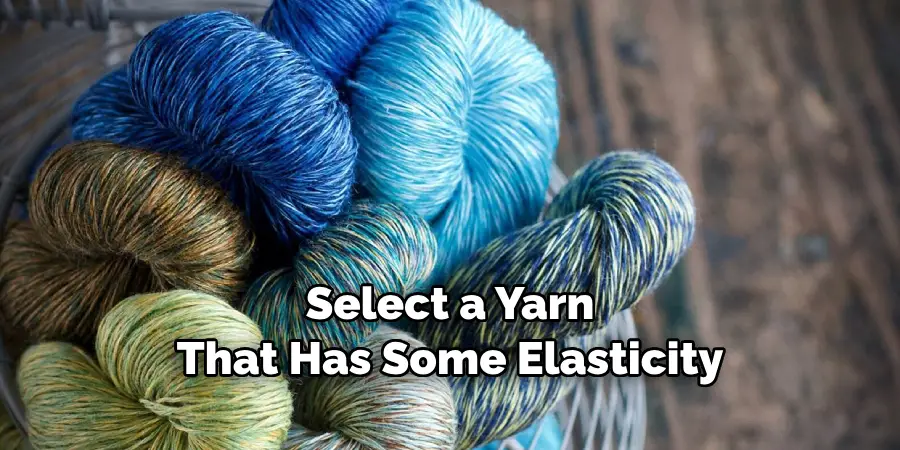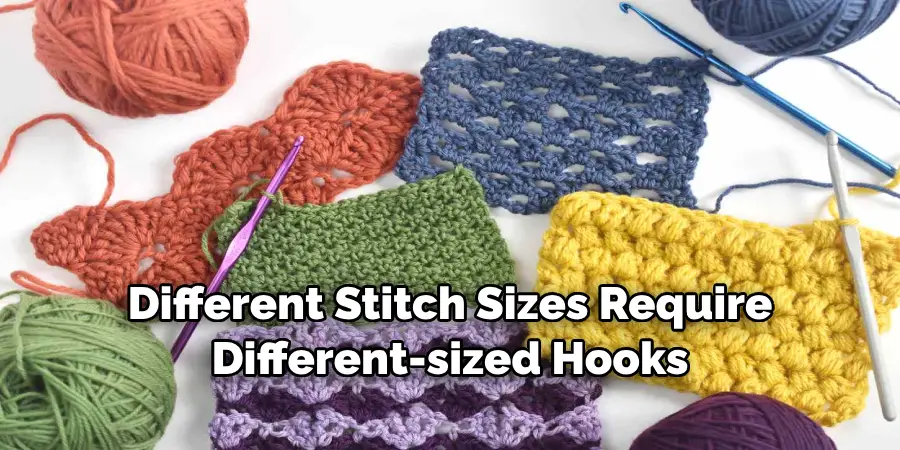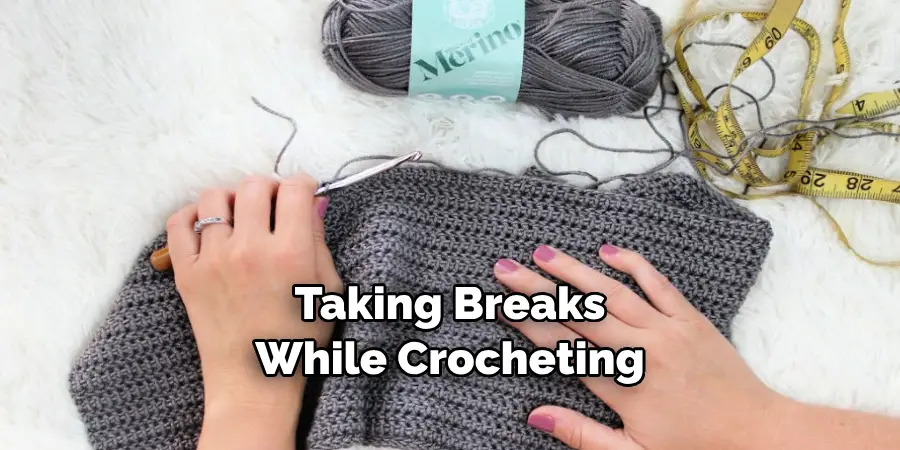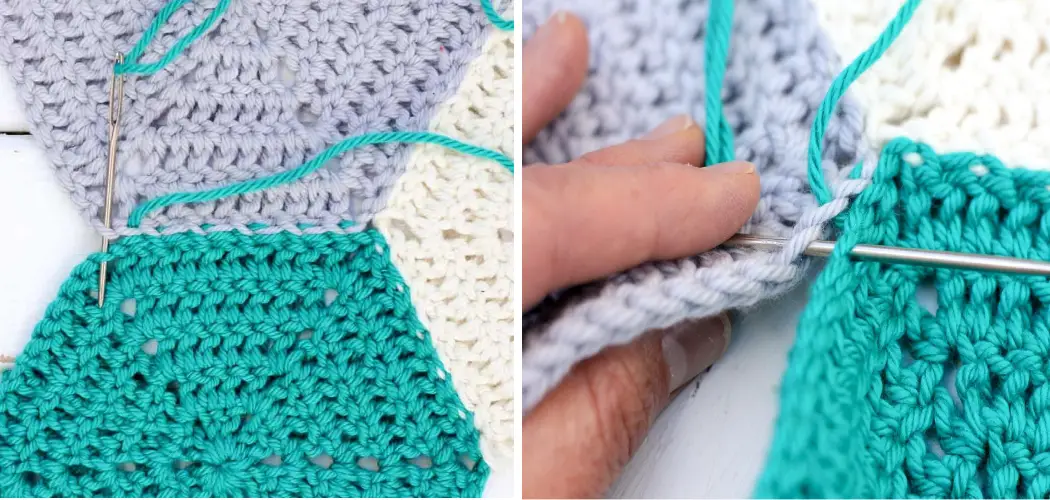Are you looking to take your crochet skills to the next level? Do you want to make stitches that are nearly seamless, leaving no easily noticeable join between rows? If so, then learning how to invisible join crochet is a great technique for achieving that look.
An invisible join creates an almost flawless transition between two pieces of crocheting and allows for smooth increases or decreases, which makes it ideal when working on projects with intricate patterns.

In this post, we’ll discuss everything from what materials you need to get started (including a few tips on selecting the right yarn and hook) all the way up through tips and methods for carrying out successful invisible joins in your own projects. So if you’re ready to increase your proficiency in crocheting and achieve amazing results, let’s begin by diving into all things invisibly joined crochet!
What is Invisible Join Crocheting?
Invisible join crochet is a technique used to seamlessly join pieces of crochet together. It’s commonly used in crocheted garments and other projects that require smooth transitions between stitches, such as blankets and Afghans. By using this method, you can create a nearly invisible seam between two separate sections of work, creating an almost seamless look.
What Do I Need for Invisible Join Crochet?
The materials you’ll need to get started with invisible join crochet are the same as those necessary for any other crochet project. You’ll need
- A yarn
- A crochet hook
- Scissors
- Tapestry needle
When it comes to selecting yarn for your project, the most important thing is that you select a yarn that has some elasticity. This will help ensure that your stitches stay nice and tight when joining them together. As far as hooks go, the size of the hook you’ll need to use will depend on the yarn you select. Check the yarn label for a suggested hook size before you begin your project.

How to Invisible Join Crochet in 10 Steps
Step 1: Begin the First Row
Begin by crocheting the first row of your project. The first row should be worked until it is the desired length. keep in mind that the last stitch of the first row will need to be worked loosely.
Step 2: Begin the Next Row
Once you’ve finished crocheting your first row, it’s time to begin working on the second row. Work until you reach the end of this row, making sure not to work too tightly for best results.
Step 2: Create a Slip Knot
Once your first row is complete, create a slip knot to secure the end of the yarn and prevent it from unraveling. Creating a slip knot is easy; simply wrap the yarn once around your finger, and then insert the hook through the center of the loop. Pull the yarn tight to secure your slip knot.
Step 4: Insert Hook Through Last Stitch of First Row
Next, you’ll need to insert your crochet hook into the last stitch of your first row. Make sure to insert it from the back side of the stitch and then pull it through to the front side.
Step 5: Pull Yarn Through Stitch
Now you’ll need to take your yarn tail (the end that is attached to the ball of yarn) and pull it through both loops on your crochet hook. Once the yarn is pulled through, you will have created a slip stitch.
Step 6: Insert Hook Through the Last Stitch of the Second Row
Now, you’ll need to insert your crochet hook into the last stitch of your second row (the one that is closest to the beginning of the row). Make sure to insert it from the front side of the stitch and then pull it through to the backside.

Step 7: Pull Yarn Through Stitch
Next, you’ll need to take your yarn tail and pull it through both loops on your crochet hook. Once the yarn is pulled through, you will have created a slip stitch.
Step 8: Insert Hook Through First Stitch of Second Row
Now, you’ll need to insert your crochet hook into the first stitch of your second row (the one that is closest to the end of the row). Make sure to insert it from the front side of the stitch and then pull it through to the backside.
Step 9: Pull Yarn Through Stitch
Next, you’ll need to take your yarn tail and pull it through both loops on your crochet hook. Once the yarn is pulled through, you will have created a slip stitch.
Step 10: Pull Yarn Through the Last Slip Stitch
Now that you’ve completed all of the steps for creating the invisible join, it’s time to pull the yarn through the last slip stitch. This will secure your invisible join and make sure it is nice and tight.
And that’s all there is to it! By following these steps, you can easily create an invisible join between two pieces of crochet work for a nearly seamless look. Now that you know how to invisible join crochet, you can start incorporating this technique into all of your projects.
8 Common Mistakes to Avoid When Learning How to Invisible Join Crochet
Crocheting is a great craft and an enjoyable hobby. But it can also be tricky at times, especially when you’re trying to learn a new technique. While mastering this skill takes practice, there are some common mistakes that beginners make that can easily be avoided with the right knowledge and preparation.

- Not using the correct size hook is a common mistake one does. This is one of the most common mistakes that beginners make when learning how to invisible join crochet. Different stitch sizes require different-sized hooks, so be sure to double-check your crochet pattern before starting a project.
- Not creating an even tension. If your hand is too tight, the stitches won’t look uniform. To create an even tension, practice making a chain of alternating crochet and slip stitches until you find your optimal speed.
- Not counting your stitches properly. Counting your stitches will help you stay on track and make sure each row is identical to the one before it. Make sure that you count your stitches after every row.
- Working too loosely or too tightly when making the invisible join stitch. The invisible join should be worked in a consistent manner at an even tension to make sure your stitches look uniform and neat. To practice, try working several rows of single crochet using an even tension.
- Not finishing the last row properly before joining the ends together. Before joining your two ends together, make sure that you have completed the last row properly. This will help ensure that your stitches look uniform and there are no loose ends.
- Not weaving in the yarn tails correctly. When weaving in the yarn tails after completing an invisible join crochet project, make sure to do it securely so that they stay hidden and don’t unravel.
- Not following the pattern correctly. Before you begin a project, make sure to read through the instructions carefully and follow them precisely. Even if you think you have mastered the invisible join stitch, it’s always wise to double-check your work against the pattern instructions to make sure that everything is correct.
- Not taking breaks while crocheting. Taking breaks while crocheting can help break up your project and give you time to focus on the details of each stitch. When taking breaks, make sure that you are not neglecting any part of the pattern or skipping any stitches.
Learning how to invisible join crochet can be a challenge but also rewarding when done correctly. By avoiding these 8 common mistakes, you will be able to master this skill and create beautiful projects in no time.

Frequently Asked Questions
How Long Will It Take?
Invisible join crocheting doesn’t take longer than any other type of crochet. It’s a relatively simple skill to learn, and some experienced crocheters can even do it without having to look at the pattern. Keep in mind that if you’re just starting out or are learning a new stitch, you should plan for extra time as you become familiar with it. With a bit of practice, you’ll soon be able to do invisible joins in no time!
What Are the Benefits?
Invisible join crochet is perfect for those times when you don’t want a visible seam in your work. For instance, if you’re making a garment or accessory with an intricate pattern, it can be difficult to get the seams to look just right, and they may detract from the overall effect.
Conclusion
The invisible join technique is an amazing stitch to learn in crochet and a great way to finish off any project. It leaves an almost imperceptible connection on the ground, eliminating the need for more intensive sewing techniques.
We hope that learning this technique of how to invisible join crochet has enabled you to complete your projects faster, with the most quality-looking result possible. Now, you can show off your favorite projects with confidence!
Take some time in the next few days to practice this technique until it feels comfortable and second nature. Don’t forget by experimenting with different types of stitches or colors, you can add a unique touch to any item you make. Have fun experiencing all the amazing things this invisible join crochet technique can do for your projects!


